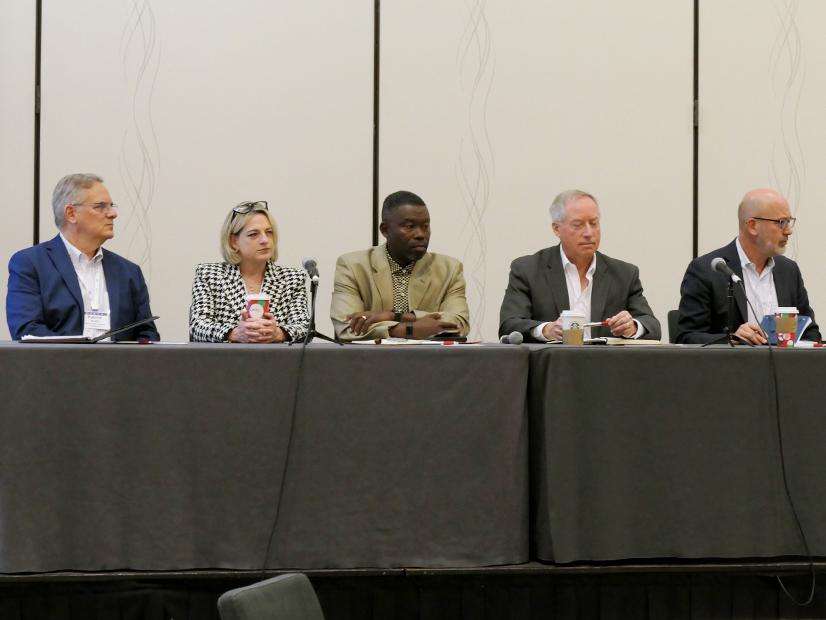
ANAHEIM, Calif. — To ensure a cost-effective energy transition, stakeholders must approach transmission planning holistically and avoid piecemeal investments, panelists argued during the National Association of Regulatory Utility Commissioners’ Annual Meeting from Nov. 10 to 13.
The total investments needed to meet the expected load growth “could easily exceed what individual market participants can finance or recover,” said Johannes Pfeifenberger, principal at The Brattle Group.
“Effective outcomes really require a multifaceted approach,” Pfeifenberger said. “On the transmission side, that means more comprehensive, holistic, proactive planning. We’re spending a lot on transmission incrementally, but we really need to plan that to achieve cost-effective outcomes with the least regrets.”
Some potential approaches Pfeifenberger highlighted include planning to avoid under- or overbuilding, loading order, cost control incentives and moving away from a compartmentalized transmission planning process.
Maine Public Utilities Commissioner Patrick Scully said the New England region has invested heavily in transmission, with annual transmission system charges rising from $869 million in 2008 to $3.3 billion in 2025.
However, the region failed to implement efficient public policies to go with the transmission, which has resulted in lost opportunities to bring more low-cost generation to fruition, Scully said.
The New England states decided to join forces and collaborate on the future of the grid, Scully said.
As a result of this collaboration, ISO-NE issued a report last year, which found that peak loads in New England would double from 28 GW to 57 GW by 2050. The transmission upgrades needed to meet this load could cumulatively cost between $22 billion and $26 billion, according to the study. (See ISO-NE Prices Transmission Upgrades Needed by 2050: up to $26B.)
“And at the request of the states, ISO agreed to establish a tariff process by which the states collectively can request that ISO issue [a Request for Proposals] to solicit competitive transmission project proposals that address the needs that have been identified in that 2050 study,” Scully said. FERC approved the changes in July.
The price tag to meet future transmission needs coming from heavy loads like data centers and chip manufacturing will be “tremendous,” said Karen Onaran, CEO of the Electricity Consumers Resource Council.
Onaran agreed with Pfeifenberger that transmission planning has so far been “very siloed,” which has resulted in limited generation options that could potentially drive down costs.
“We are encouraged by this recognition that we need more transmission,” Onaran said. “We absolutely see the big price tag. Let’s make sure that we are all coming together to figure out the solution.”
California has seen increased opportunities for interregional transmission, according to Neil Millar, vice president of transmission planning and infrastructure development at CAISO. Working across a broader footprint will enable the region to take advantage of the region’s diverse resources more efficiently, Millar added.
“Clearly, the better interregional coordination would be to the betterment of all,” Millar said.
MISO Vice President of System and Resource Planning Aubrey Johnson said there has to be a regulatory framework in place to encourage cost-effective transmission planning.
“Ultimately, if we want to see more transmission planning and more proactive stuff, it actually needs to start in a regulatory framework where people are encouraged, incentivized and challenged up to the table to do those things,” Johnson said.


